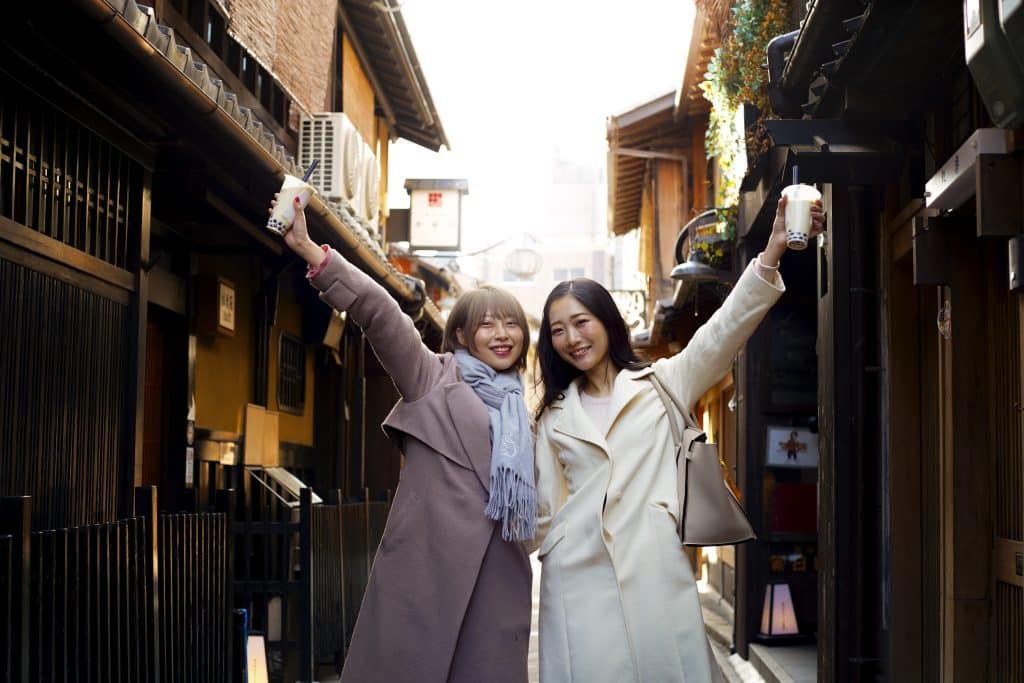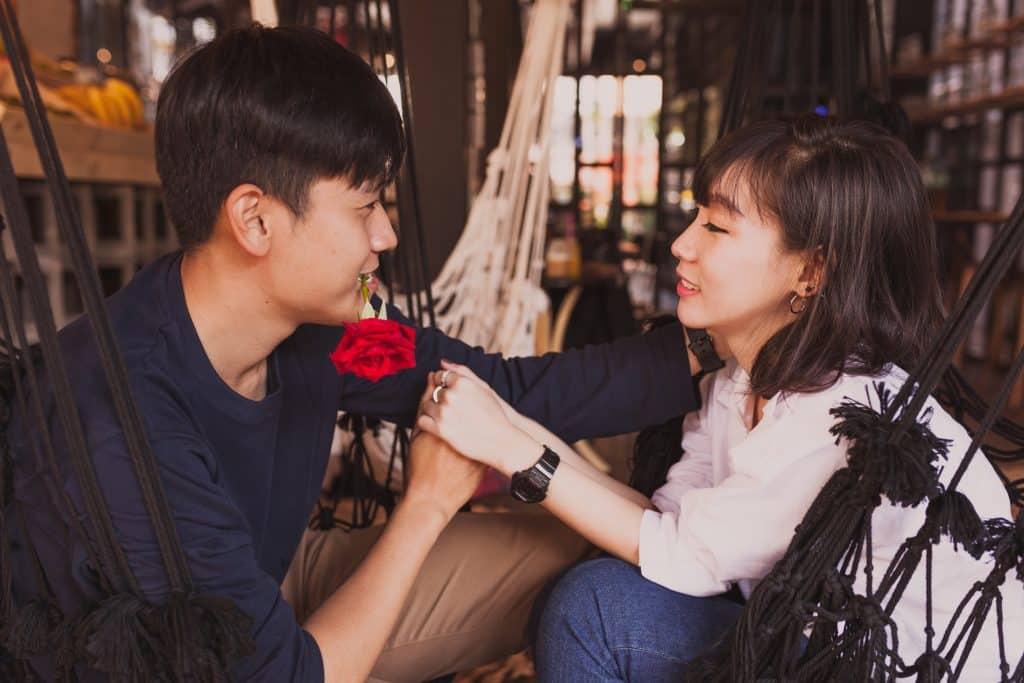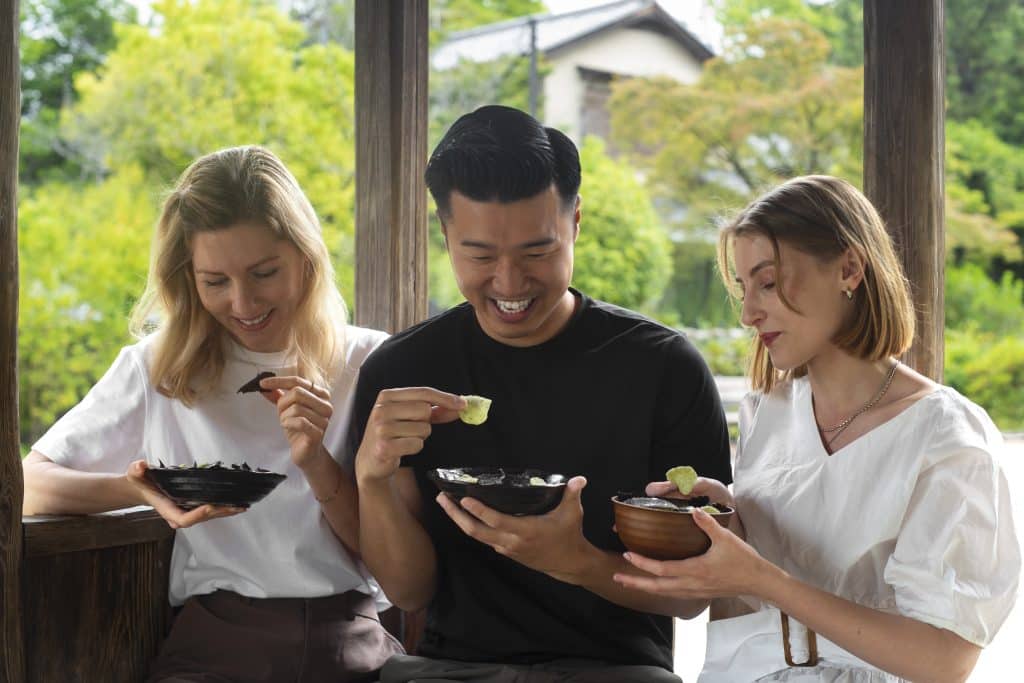Explore Why Doramas Are A Must-Watch Entertainment in 2025

Watch Japanese Doramas: A Gateway to Culture and Emotion
Doramas—Japanese television dramas—offer a unique window into the heart of Japan’s storytelling tradition. Typically consisting of 10 to 12 episodes, they deliver compact, emotionally rich narratives that feel more like novels than endless TV series. When you watch Japanese doramas, you step into stories that blend heartfelt emotion, quiet humor, and everyday realism in a way few other shows do.
Why So Many Viewers Love to Watch Japanese Doramas
Unlike Western series that often stretch across multiple seasons, Japanese doramas are known for their tight storytelling and clear conclusions. Each episode contributes meaningfully to character development, keeping the audience emotionally invested from start to finish. People who watch Japanese doramas often describe them as both comforting and thought-provoking—filled with small, human moments that feel deeply relatable.
The charm also lies in their diversity. Whether you prefer romantic tales like “Good Morning Call,” workplace dramas like “Hanzawa Naoki,” or emotional family stories like “Mother,” there’s always something to match your mood. When international viewers watch Japanese doramas for the first time, they often discover a refreshing alternative to the high-drama intensity of Western or even Korean series.
Rising Popularity at Home and Abroad
In Japan, doramas have long been a beloved part of primetime television, appealing to audiences across all generations.
But today, thanks to global streaming platforms like Netflix, Viki, and Amazon Prime Video, more people worldwide are starting to watch Japanese doramas with subtitles or even dubbed versions. The accessibility of these series has transformed them from niche entertainment into a global cultural phenomenon.
Each genre contributes to this global reach. Romance doramas capture the art of subtle connection; mystery and detective series highlight Japanese precision and intellect; and workplace comedies reveal the humor hidden in everyday routines.
International fans watch Japanese doramas not just for entertainment, but to experience cultural values like harmony (wa), perseverance, and quiet emotional honesty.
What You Gain When You Watch Japanese Doramas

To watch Japanese doramas is to engage with stories that celebrate simplicity, emotional depth, and respect for human connection. Viewers often find themselves reflecting on personal relationships, ambitions, and moral choices.
Many use these dramas as a tool for language learning or cultural immersion—observing Japanese customs, social cues, and the beauty of daily life.
Beyond entertainment, doramas promote cross-cultural understanding. When audiences from around the world watch Japanese doramas, they discover how universal human emotions—love, loss, friendship, ambition—transcend language and geography.
Cultural Reflections: What You Discover When You Watch Japanese Doramas
Doramas offer more than just entertainment—they are cultural mirrors that reflect Japan’s evolving identity. When you watch Japanese doramas, you’re not simply following a story; you’re witnessing how the country sees itself. Through realistic portrayals of workplace dynamics, family relationships, urban living, and social expectations, these dramas shed light on the heart of Japanese society.
Each scene is layered with cultural meaning. The way characters bow, apologize, or navigate conflict reveals Japan’s emphasis on respect, empathy, and harmony (wa).
Modern doramas also explore changing values—how younger generations balance tradition with individuality, how women redefine their roles in work and love, and how technology reshapes communication and connection.
By choosing to watch Japanese doramas, international audiences can observe subtle social transitions that statistics and textbooks might miss.
For example, series like Nigeru wa Haji da ga Yaku ni Tatsu examine marriage as a contract rather than a romantic ideal, while Unnatural tackles justice, ethics, and corporate accountability in a modernized society. Each story becomes a reflection of the nation’s internal conversations about progress and identity.
The format itself evolves with society. Early doramas from the 1980s often idealized family unity and hard work; contemporary ones question burnout, gender imbalance, and emotional repression. This adaptability makes doramas more than just episodic fiction—they are living archives of Japan’s changing culture.
The Evolution of Japanese Doramas: From Tradition to Global Screens
From Classic to Contemporary Formats
Japanese television dramas—known as doramas—have undergone remarkable transformation over the decades. When you watch Japanese doramas from different eras, you can trace how both storytelling and society have evolved hand in hand.
In the early years, doramas often took the form of family sagas, historical samurai epics, or moral tales rooted in post-war values.
These long-running series featured melodramatic arcs and slower pacing, designed for audiences who gathered around the TV as a shared evening ritual. Storylines emphasized duty, perseverance, and community spirit—core pillars of traditional Japanese life.
As lifestyles became faster and more urbanized, the format shifted. Producers began creating shorter, more focused seasons, typically between 10 and 12 episodes.
This compact storytelling style made doramas more digestible for modern viewers, especially those balancing long work hours or studying.
It also allowed writers to deliver tighter narratives with clear emotional payoffs, making it easier for international fans to watch Japanese doramas without committing to endless seasons.
Shifts in Social Themes and Values

What makes doramas particularly fascinating is how they mirror Japan’s social evolution. Earlier series from the 1970s and 1980s highlighted collectivism, family duty, and corporate loyalty, portraying protagonists who found fulfillment through sacrifice and teamwork. The workplace and the household were central symbols of identity.
But as Japan entered the 21st century, its cultural landscape changed—and so did its television.
Modern doramas began exploring themes of individualism, gender equality, mental health, and work-life balance. Characters started questioning long-held traditions: women sought independence beyond marriage; salarymen faced burnout and disillusionment; younger generations struggled with loneliness despite living in bustling cities.
When you watch Japanese doramas today, you can sense these deeper cultural tensions. Shows like Nigeru wa Haji da ga Yaku ni Tatsu or Shitsuren Chocolatier tackle love and work from fresh, introspective perspectives, while series such as Unnatural and MIU404 delve into ethics, justice, and systemic issues. Each story acts as a time capsule, capturing the emotions, anxieties, and aspirations of a generation.
The Global Impact of Streaming Platforms
In the past decade, global streaming platforms such as Netflix, Viki, and Amazon Prime have played a pivotal role in the worldwide rise of doramas. Viewers from across the globe can now watch Japanese doramas easily, with high-quality subtitles and simultaneous releases. This accessibility has turned what was once a domestic genre into a powerful cultural export.
Streaming has also encouraged cross-cultural storytelling. Contemporary Japanese doramas now feature international collaborations, bilingual scripts, and diverse settings that reflect Japan’s engagement with a global audience. Meanwhile, global viewers—especially from the U.S., Europe, and Southeast Asia—are drawn to the sincerity, quiet beauty, and moral depth that define Japanese storytelling.
As more audiences watch Japanese doramas online, these shows influence global perceptions of Japan, from its fashion and food to its work culture and emotional expression. What began as a local television format has evolved into a bridge of cultural understanding, connecting viewers through shared emotions and universal human stories.
Work Culture and Corporate Life
Office Life and Workplace Hierarchies
Japanese doramas provide a close look into the structured dynamics of office life. Viewers often see employees interacting in open-plan offices or cramped meeting rooms, where etiquette and hierarchy guide every exchange. Junior staff bow politely to their seniors, and the use of formal language underscores respect for rank and experience.
A boss’s approval carries great importance, setting the tone for group decisions and promotion prospects. Teamwork is celebrated, but individual achievement is often downplayed. This environment, portrayed regularly in doramas, highlights the balance between group harmony and personal ambition.
Overwork and Work-Life Struggles
Doramas do not shy away from illustrating the toll of a demanding work culture. The concept of ‘karoshi’—death from overwork—serves as a stark reminder of the pressures employees face. Extended office hours, unpaid overtime, and after-hours social obligations are common storylines. Characters struggle to maintain personal lives, underscoring the challenge of achieving a healthy work-life balance. These depictions invite viewers to reflect on how stress impacts well-being and family relationships.
Changing Roles for Women
Recent doramas have begun spotlighting women’s roles in the workplace. Storylines follow female professionals navigating career growth, discrimination, and the negotiation of traditional gender expectations.
Some depict working mothers, highlighting the dual pressures of corporate life and household responsibilities. These portrayals mirror shifts in Japanese society, where more women are advancing into management roles and advocating for workplace equality.
Urban living brings additional challenges, shaping how characters manage their professional and personal lives.
Urban Living and Housing Realities

Everyday Life in Tight Spaces
Japanese doramas often spotlight the reality of compact living. Scenes regularly unfold in tiny apartments, where characters cook, study, and relax in the same multi-use space.
This mirrors actual urban conditions—many residents, especially in cities like Tokyo, live in apartments that maximize functionality over square footage. Storage solutions, such as loft beds and modular furniture, are common fixtures in these dramatized homes, highlighting both inventiveness and the limitations imposed by limited space.
The Urban-Suburban Divide
Doramas frequently contrast the fast-paced life of metropolitan Tokyo with quieter suburban or rural settings.
City dwellers endure long commutes on crowded trains, which is portrayed as a daily grind influencing personal time and well-being. Storylines sometimes follow characters who move to less-populated areas seeking affordable housing or a slower pace, allowing viewers to see differences in community bonds, environment, and lifestyle.
Financial Realities in the City
A recurring theme in urban doramas is the financial strain of city life. Young professionals are shown budgeting carefully, with rent sometimes taking up a large share of their paycheck.
Storylines may feature roommates or shared-living situations as pragmatic solutions to high costs. These narrative choices reflect the real economic challenges many face, making these dramas relatable for viewers experiencing similar struggles.
This realistic depiction of housing and urban struggles offers insight into everyday decisions, shaping the paths characters take within their personal and professional lives.
Family Structures and Intergenerational Relationships
Shifting Family Dynamics
Japanese doramas often highlight how families are changing. Traditional multi-generational households are becoming less common, especially in urban areas.
Stories now focus on small nuclear families or even single-person households. This reflects the real decline in birth rates and the growing trend of individuals delaying or choosing to forgo marriage and children. Such depictions subtly show the social and emotional pressures experienced by those navigating these new family forms.
Tradition Versus Individualism
Doramas frequently explore tensions between honoring family expectations and pursuing personal dreams. Young characters may feel caught between respecting elders and building independent lives in the bustling city. Through these stories, viewers see the pull of modern individualism challenging long-held values of filial duty and collective harmony. Characters grapple with guilt for prioritizing career or personal fulfillment over traditional family obligations.
Aging and Elder Care
As Japan’s population ages, doramas increasingly feature elder care as a theme. Characters often face the challenges of caring for aging parents, sometimes while managing careers and their own families.
These portrayals offer insight into the struggles with elder loneliness, the rising need for nursing homes, and the emotional weight on middle-aged adults tasked with caregiving. Storylines present both the stress and the moments of connection that grow out of these circumstances.
Japanese doramas use these family themes to paint an authentic and sometimes bittersweet picture of modern life, highlighting how people adapt to societal shifts.
Romance and Modern Relationships

Shifting Views on Love and Dating
Japanese doramas provide a fascinating window into the evolution of dating culture and changing marriage expectations. Older dramas often centered on arranged marriages or family-approved relationships, emphasizing duty and tradition.
In recent years, many shows explore youthful romance, dating apps, and the casual pursuit of love, reflecting Japan’s shifting attitudes toward personal choice and emotional fulfillment. These modern narratives highlight the complexity of juggling demanding careers with romantic aspirations, echoing challenges real urban singles face.
Education and Social Pressure
Academic Pressures in Japanese Youth
Japanese doramas frequently highlight the intense academic environment faced by students. The concept of “examination hell,” or juken jigoku, is a familiar storyline.
Characters often study late into the night, striving for top grades to gain admission to selective high schools and universities. This pressure, while frequently dramatized, mirrors the reality that education in Japan is fiercely competitive, with standardized tests playing a major role in shaping future prospects.
Bullying and the Push for Social Conformity
Bullying, known as ijime, is another topic explored in many school-based doramas. These dramas shed light on the emotional toll of peer pressure and group dynamics. The expectation to fit in and avoid standing out is deeply rooted in Japanese society.
Doramas capture how victims struggle with isolation or seek resilience, sometimes finding support from teachers or friends. This theme opens conversations about empathy, inclusion, and the need for reform within school environments.
Technology and Digital Life
Everyday Integration of Technology
Japanese doramas often illustrate how digital technology shapes daily routines. Characters use smartphones for everything from train schedules to online shopping.
Scenes set in homes or cafes subtly show the use of tablets, digital assistants, and smart appliances. Storylines frequently incorporate apps for banking, socializing, or food delivery. This seamless technological presence mirrors urban Japan, where convenience and efficiency are highly valued.
Social Media and Digital Communication
Communicating through text, social media platforms, and video calls is a staple in modern doramas. Plotlines explore both the benefits and downsides of heavy online engagement—such as maintaining distant friendships yet feeling isolated offline.
Characters often grapple with misunderstandings from texts, online rumors, or the pursuit of social status through curated profiles. These themes reflect real changes in how young adults form and maintain relationships in urban Japan.
Generational Tech Divide
Doramas thoughtfully contrast tech-savvy youth with digitally hesitant older generations. Younger characters embrace new apps and gadgets with ease, while elders may struggle with devices or feel left out of digital trends.
This generational gap sparks humorous and touching moments, highlighting broader societal shifts and the challenges faced by families adapting to rapid technological change.
These evolving digital realities enrich the portrayal of Japanese urban life, shaping interactions and daily choices.
Social Issues and Taboo Topics

Watch Japanese Doramas: Portrayal of Social Minorities and Diversity
When you watch Japanese doramas, you begin to notice an important cultural shift—one that mirrors Japan’s slow but steady embrace of diversity.
While Japanese society has traditionally valued harmony and homogeneity, modern doramas are starting to challenge that image by bringing new voices and perspectives to the screen.
Recent productions feature characters of mixed heritage, immigrants, and members of the LGBTQ+ community, exploring the everyday realities of those who once existed on the margins of mainstream narratives.
When international audiences watch Japanese doramas today, they encounter stories that go beyond the typical family or workplace setting, revealing Japan’s changing sense of identity and inclusion.
These portrayals may be subtle—an interracial friendship, a same-sex couple navigating quiet acceptance, or an immigrant worker finding belonging in a small town—but they carry powerful emotional weight.
Through these stories, viewers who watch Japanese doramas are invited to reflect on evolving values, social tolerance, and the meaning of community in a rapidly globalizing world.
Series such as Ossan’s Love, Silent, and Hafu highlight this ongoing transformation. They show that empathy and understanding often emerge not from grand gestures, but from small moments of human connection.
To watch Japanese doramas with this lens is to see Japan in transition—grappling with change, questioning old norms, and slowly redefining what it means to belong.
Watch Japanese Doramas: Food Culture and Social Bonding
The Role of Food in Everyday Scenes
When you watch Japanese doramas, you’ll quickly notice how often food takes center stage.
Far beyond serving as background detail, meals in these dramas reflect the rhythm of daily life and the emotional fabric of Japanese society. Breakfast tables, bento lunches, and cozy home-cooked dinners become powerful storytelling tools.
A family sharing miso soup before work, friends eating ramen after a long day, or a character quietly preparing rice late at night—all of these moments reveal emotional layers that dialogue alone cannot capture.
When you watch Japanese doramas, you witness how food becomes a language of care, connection, and reflection. Each meal tells a story: of love unspoken, tensions unresolved, or memories cherished.
Shows like Kodoku no Gourmet and Shinya Shokudo perfectly embody this spirit. Through them, viewers not only watch Japanese doramas about food but experience how meals can heal loneliness, restore balance, and create fleeting yet meaningful human connections.
Shared Meals as Social Glue

In Japan, sharing a meal is much more than eating—it’s a cultural ritual that strengthens relationships and restores harmony. Doramas beautifully translate this tradition onto the screen.
When you watch Japanese doramas, you’ll see that dining scenes often mark moments of emotional breakthrough: reconciliation after conflict, comfort during hardship, or simple gratitude for everyday companionship.
Meals are depicted as symbols of unity and empathy. Whether it’s a couple cooking together in a romantic drama or coworkers bonding over street food after a long shift, eating together becomes an act of quiet solidarity.
These subtle moments remind viewers that in Japanese culture, food is not merely nourishment—it’s connection.
When international audiences watch Japanese doramas, they gain insight into how Japan views the act of eating as social glue, a way to express affection and respect without words.
Every shared bowl of noodles, every lovingly packed bento, reflects the idea that care is best shown through small, sincere gestures.
Watch Japanese Doramas: Chronicling Social Change
When you watch Japanese doramas, you’re not just enjoying captivating stories—you’re witnessing Japan’s social evolution unfold onscreen. Many doramas serve as subtle yet powerful chronicles of how everyday life, work culture, and personal values have transformed over recent decades.
Take Hanzawa Naoki, for example. This iconic drama doesn’t simply entertain; it exposes the moral and corporate tensions that define modern Japan. Through the struggles of a determined banker challenging corruption and hierarchy, viewers watch Japanese doramas that question traditional authority and highlight a growing desire for fairness, transparency, and integrity in professional life.
On the other hand, Kodoku no Gourmet tells a quieter story—but one equally profound. Centered on a traveling salesman who finds solace in solitary meals, it celebrates the beauty of small rituals in an increasingly fast-paced, urban world. When audiences watch Japanese doramas like this, they glimpse how modern Japan balances individuality and community, ambition and introspection, work and well-being.
These series, among many others, document Japan’s shifting cultural rhythm—where once-rigid social codes give way to personal freedom, and where solitude becomes both a challenge and a comfort.
To watch Japanese doramas is to trace the nation’s journey through its people: their workplaces, homes, dreams, and quiet rebellions.
Conclusion: Beyond Entertainment
Japanese television dramas, or doramas, go far beyond mere entertainment. They offer viewers both in Japan and abroad unique insights into the fabric of everyday urban life.
Through their storytelling, doramas serve as living documents, reflecting both the aspirations and challenges faced by contemporary society.
Doramas achieve a delicate balance between dramatization and authentic cultural representation. Everyday scenarios—whether in the workplace, at home, or during casual meals—are interwoven with dramatic elements, making them engaging yet truthful.
This helps audiences connect emotionally to the characters, while still giving an honest look at real issues like work pressures, family tensions, and social expectations.





